ATHENS (Day 7 - part 2)
It was a long, hot walk to the Kerameikos, located on the edge of ancient Athens. Named after the numerous ceramic workshops that once surrounded it due to the nearby clay on the river banks, it is now best known for its cemetery which dates back to the 5th century BC.
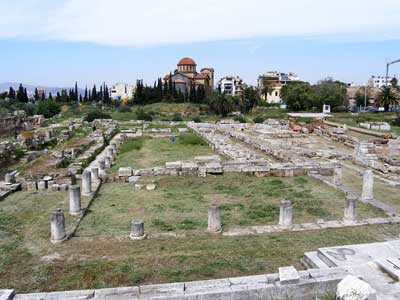
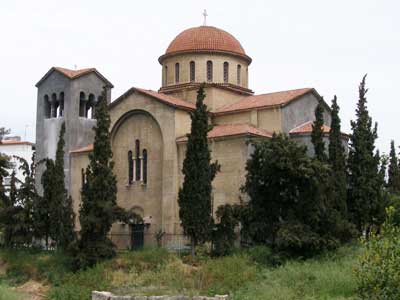
The ruins of the Pompeion... and the Church of Agia Triada (Holy Trinity)
The Pompeion was a spacious building built in the 5th century and was used for the preparation of large events such as the Panathenaia festival, the most important festival in ancient Athens. It was plundered and destroyed in 86 BC.
The museum had an extensive collection of burial-related artifacts.
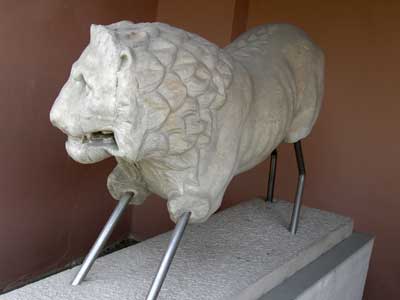

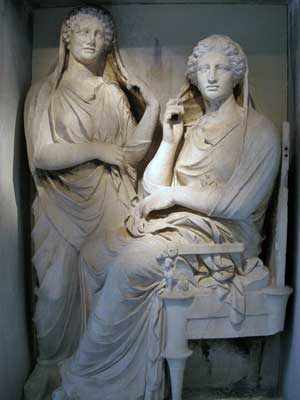
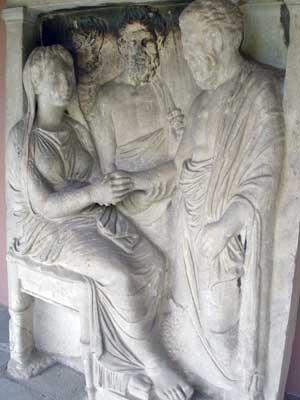
These are some original burial sculptures. Plaster ones have taken their place outside.
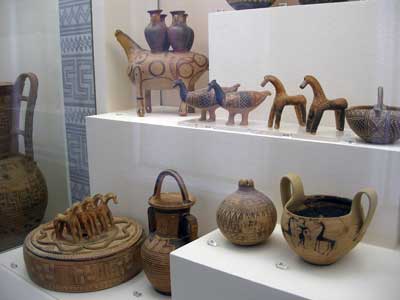
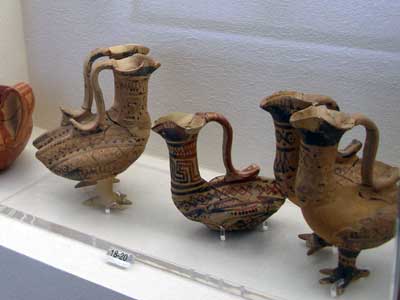
All these items were found in the cemetery.
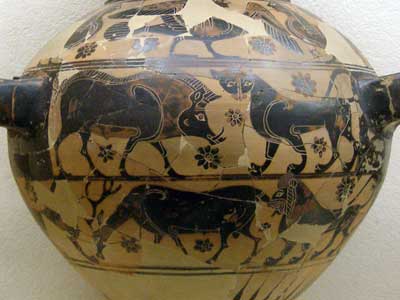

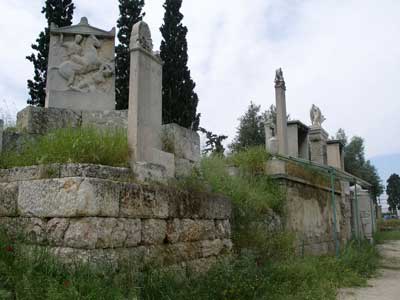
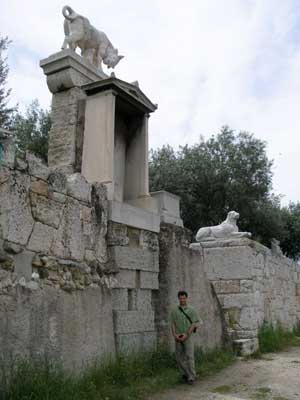
Reconstructions of grave markers line the Street of Tombs or Eleusinian Way.... A bull marks the tomb of Dionysios of Kollytos (345 - 338 BC).
This Sacred Way was a very old road leading to Eleusis, a town about 12 miles away. Every year, a large procession went to the city to engage in important, secret religious rites dating back to an ancient cult of Demeter and Persephone.
Next we decided to tackle the Acropolis. We started at the bottom of the large Theater of Dionysus, made our way to the top of it, followed along the base of the cliff to the top of the smaller Herodeon, then walked up to the top of the hill where we could enjoy its various temples.... the Propylaea, the Parthanon and the Erechtheion.
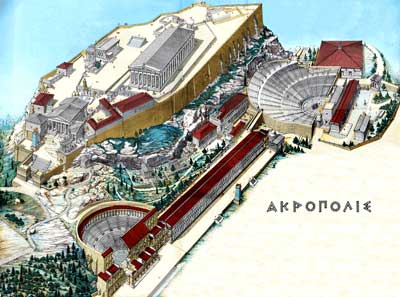
This is how the Acropolis probably used to look (click for a larger view)
The Theatre of Dionysus was built in the 4th century BC when Greek theater was first being created. It is the first stone amphitheater in the world. It was dedicated to Dionysus, the god of wine and ecstasy, and could seat 17,000 people. It was reconstructed many times over the centuries; an old Roman version it what we see today.

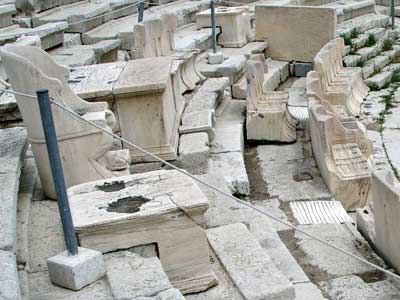
Originally made of wood, the stone seats were added in 330 BC. ... The marble thrones were inscribed with the names of the dignitaries who occupied them.
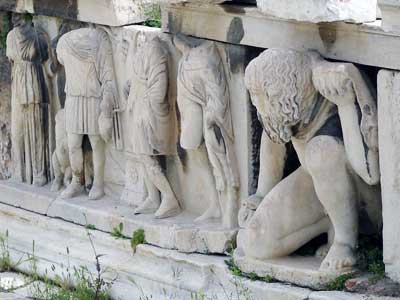
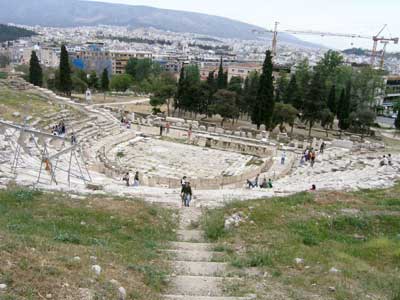
Reliefs showing the stories of Dionysus.... The climb to the top
The Sanctuary of Asclepius was a temple dedicated to the god Asclepius (medicine) and his daughter Hygieia (health). It was founded in 420 BC and was first excavated in 1876.

Parts of the temple were currently being reconstructed.
We'd already seen the outside of the Herodeon on our first day in Athens. Now we got to see the inside.
It is also known as the Odeon of Herodes Atticus since it was built by Herodes Atticus in memory of his wife in the year 161. An odeon is simply a building used for musical performances.The theater was originally covered with a wooden roof and could seat 5,000 people. It was destroyed in 267 but restored to a useable condition in the 1950's.

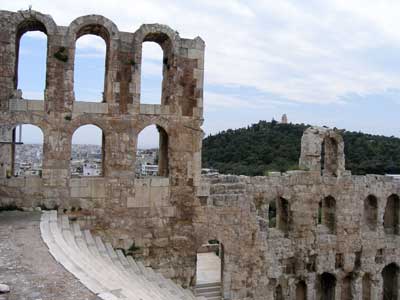
We then walked up to the top of the hill.
While people had been living here as far back as 6,000 years ago, it was Pericles (circa 495 - 429 BC) who gets the credit for the impressive buildings that stand here now. Pericles, sometimes called "the first citizen of Athens," was a prominent and influential statesman. He turned Athens into an educational and cultural center, and one of his biggest projects was the Acropolis.
After the Ottoman conquest, the building was used as a mosque in the early 1460's. The building (as well as the other structures on the Acropolis) was seriously damaged in 1687 when gunpowder (being stored inside by the Ottomans) exploded after it was hit by a cannonball shot by the Venetians during the Morean War.
The first building we encountered was the Propylaea. A propylaea is any monumental gateway in Greek architecture. While it was not built as a fortified structure, it was meant to control who could enter the sanctuary, protecting it from those not ritually clean, runaway slaves or others criminals who sought protection of the gods. Construction began in 437 BC but the building was never finished.
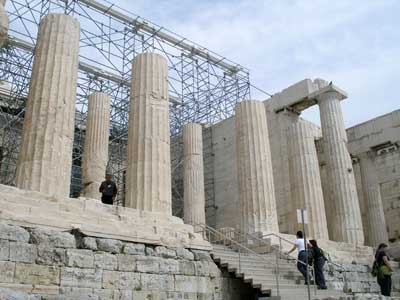
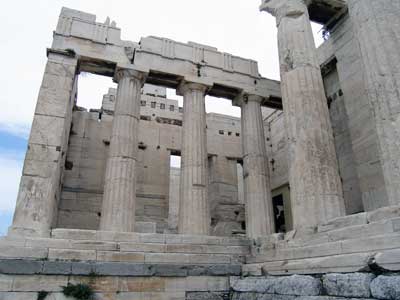


The Parthenon was built in honor of the goddess Athena Parthenos (virgin Athena), after whom the city takes its name. There is evidence of two earlier and smaller temples in this location before Pericles had this one built. Construction began in 447 BC and was finished 9 years later.
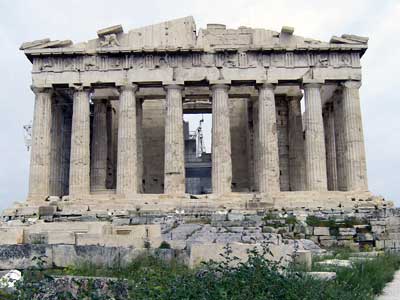
The west side
Both the west and east sides of the building have a pediment, a triangular upper part. Originally, these were highly decorated. The west side depicted the contest between Athena and Poseidon to become the city’s patron, and the east side told the story of the birth of Athena from the head of her father, Zeus.
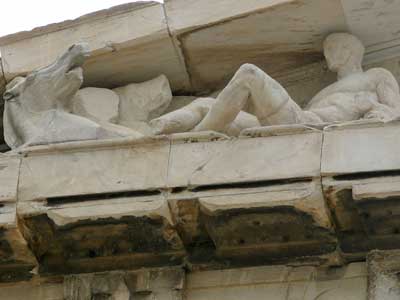

Placeholders show the corners of the story on the east side.
The birth of Athena took place at dawn, so the left corner shows the heads of the horses of Helios (sun) as they rise above the horizon pulling the sun behind them. The are full of energy, unlike the exhausted horses in the right corner as they descend below the horizon at the end of a hard workday.
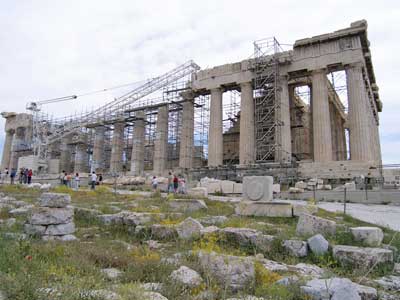

Under construction

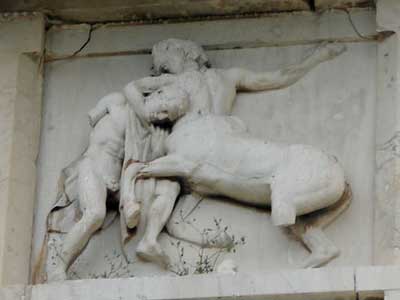
In the upper corner is a relief showing the battle between the Lapiths and Centaurs.
We saw this same battle earlier on the Hephaisteion in the Ancient Agora. Lapithes and Centaurus were twin sons of the god Apollo and the nymph Stilbe. Lapithes was a valiant warrior, but Centaurus was a deformed and his descendants became a race of half-man, half-horse. Their battle symbolizes the interior struggle between peaceful, civilized behavior and wild, untamed, drunken behavior... the difference between man and barbarian.
The Erechtheion, built from 421 to 406 BC, was dedicated to Athena and Poseidon. It gets its name from King Erichthonius, a legendary early ruler of ancient Athens.
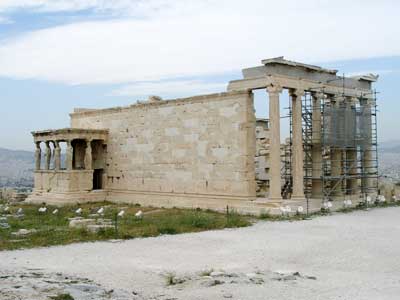
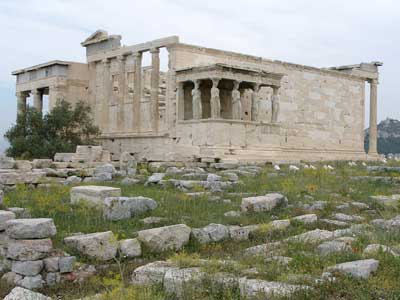
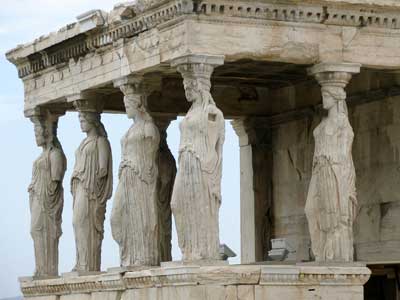

The Porch of the Caryatids contains six female figures as support columns (called caryatids; the male version is a telamon or atlas). The porch was built to conceal a giant support beam after the building was drastically reduced in size and budget due to the start of the Peloponnesian war. The original caryatids are now in the museum while these replicas stand in their place.
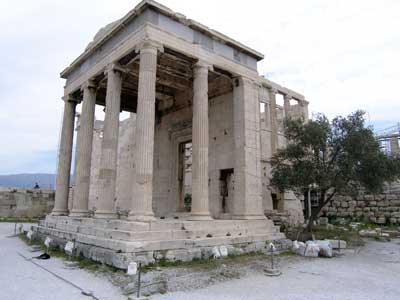
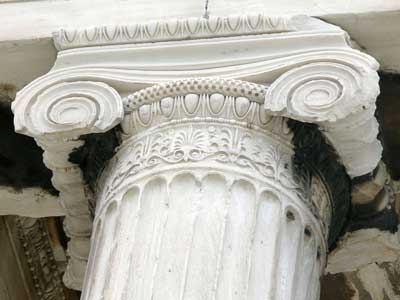
The back side, with some ornate decoration
The hill offered great views of the entire city.
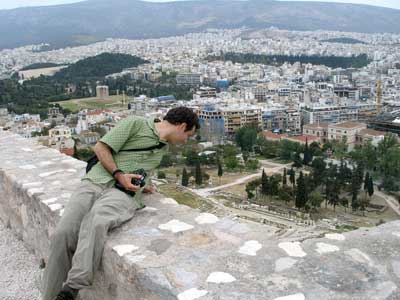
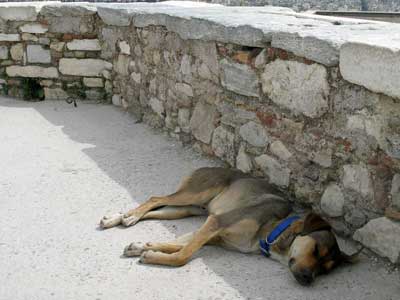
Some thoroughly enjoyed the view... while others didn't seem all that impressed.
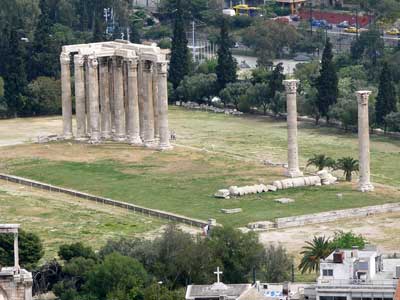
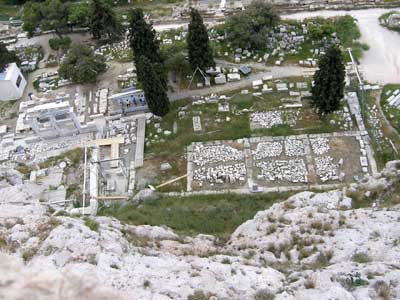
The Temple of Olympian Zeus ... and the Sanctuary of Asclepius
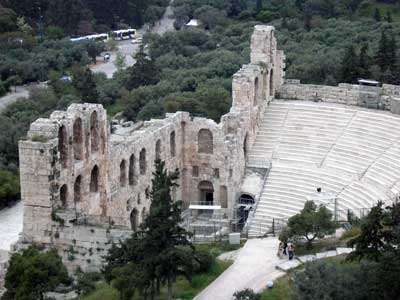
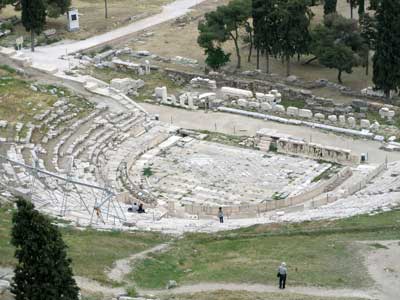
The Herodeon ... and the Theatre of Dionysus
At the far end of the Acropolis was a museum.
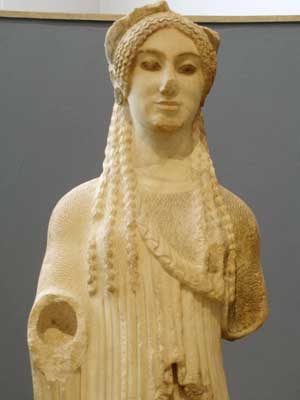
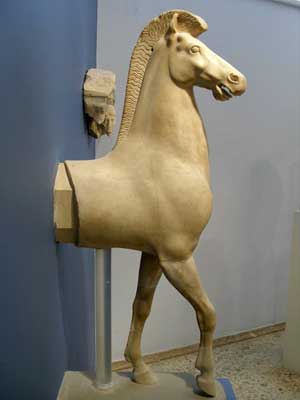
The Sphinx-eyed kore ... and a rather happy looking horse
Kore (meaning maiden) was the daughter of Demeter. The name is also applied to free-standing statues of young girls created between 600 - 480 BC. Many such statues have been found here. The Sphinx-Eyed kore dates to around 500 BC.
The statues were commissioned by wealthy patrons to serve the deities in place of themselves. They were never meant to represent the actual deities. Sometimes they become commemorative grave markers. Unlike the male version (called a kouros) who was always naked, the kore was ornately dressed with elaborate hairstyles.
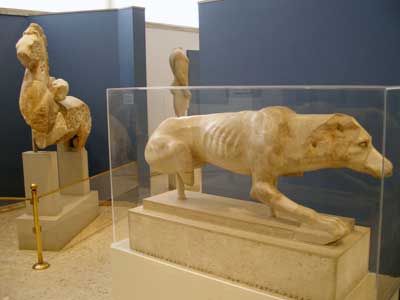
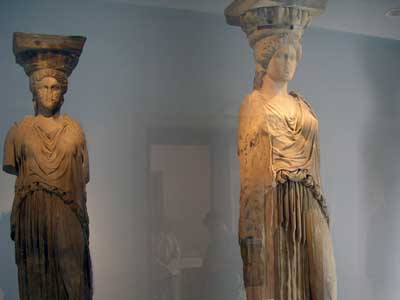
A marble hunting dog (530 - 520 BC) ... and the original caryatids
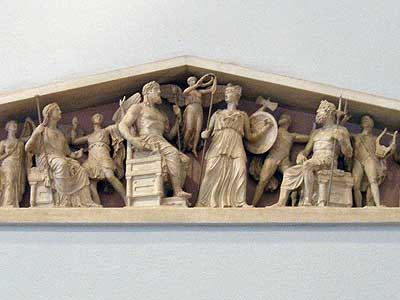
A recreation of the east pediment showing the birth of Athena. Unfortunately the center section was destroyed before it could be recorded in 1674 by Jacques Carrey (1649 - 1726, a French painter), so this is just a best guess. In the center are Zeus and Athena, who emerged from his head as an adult in full armor.
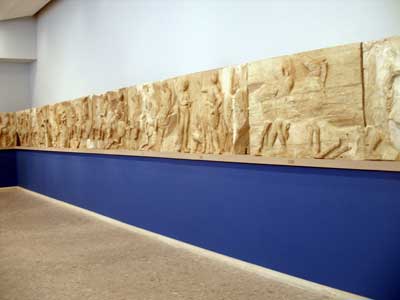
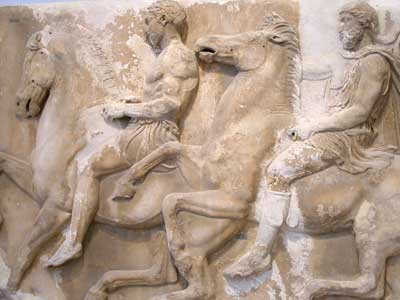
The Parthenon frieze is the marble sculpture that spanned 524 feet on the upper part of the Parthenon. Sculpted between 443 and 438 BC, 80% of it still survives. The rest is known from the drawings made by Jacques Carrey 13 years before the Venetian bombardment ruined the temple.
We retraced our steps back across the top of the Acropolis.
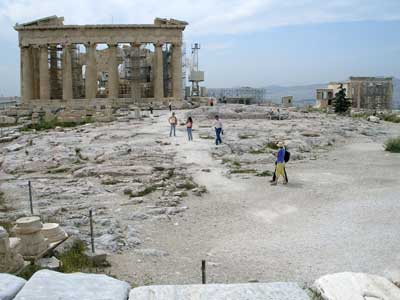
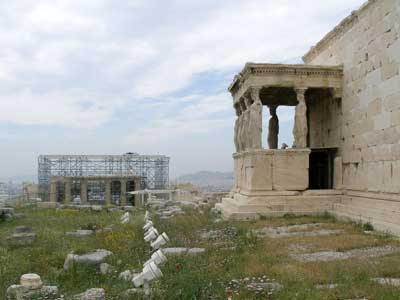
The Parthenon (left) and the Erechtheion (right) ... and the Propylaea (left) and the Porch of the Caryatids on the Erechtheion (right)
return • continue